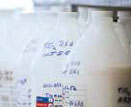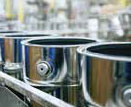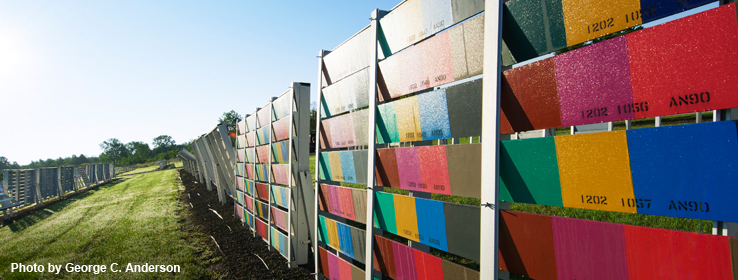Everything you need to know about quality paint selection
Customer-driven innovation
Creating a great paint is like constructing a world-class building. Both require visionary design; the finest materials; state-of-the-art instruments; and the most highly trained, creative minds available for the job.
Ultimately, we believe one person decides whether we're delivering quality: you. Customers drive innovation at Sherwin-Williams at every stage, from presenting us with performance challenges to solve, to field-testing final products to ensure consistency.

"You get what you pay for," goes the old adage. That's certainly true with Sherwin-Williams paints, which are always designed to help you extend and maximize your investment in beautiful, durable, lasting finishes.
The ingredients of paint
The very best paints are made with the best available ingredients. To know why one paint outperforms another, you have to understand what's inside each can.
| Component | What It Does | Why It Matters |
| Pigment | Provides color and hide — and, in the case of lower-grade “extender” pigments, bulk. | Higher-quality paints contain more prime pigments, giving you better hiding and color rentention. |
| Liquids | Simply the “carrier” to help you get the paint from the can to the wall. | The lower the paint quality, the more “watered-down” it usually is. |
| Additives | “Extra” ingredients that give paint specific performance characteristics it wouldn’t otherwise have. Examples include mildewcides and rheology modifiers. | Depending on your project, the right additives can offer you better flow, leveling, dry time and extended storage, or even help reduce odors already present in a room. |
| Binders | Provide adhesion and resistance to cracking, blistering and peeling. | The type and quality of binders affect everything from stain resistance to gless and adhesion. Latex paints contain acrylic binders, while oil paints contain linseed oil, soya oil or alkyds. |
The "CSI: Cleveland" of paint
Inside our Breen Technology Center in Cleveland, no characteristics of paint goes untested. More than 300 scientists and chemists use state-of-the-art equipment to access and improve durability, washability, scrubability, burnish resistance, hide, color retention and hundreds of other factors. While other brands sometimes rely on "off the shelf" formulations, our researchers are developing our own, next-generation polymers — it's why we continue to lead the industry in high-performance coatings solutions. Our paints are produced in one of 34 manufacturing sites across North America — each with its own quality manager. Standardized production specifications, rigorously tested instrumentation and ongoing trend analysis ensure every batch is consistent across a host of characteristics, from viscosity to on-the-wall performance, no matter where you buy it.
-

Identify market needs
Thousands of Sherwin-Williams stores and field representatives help to identify market needs through their one-on-one contacts with customers. Our paints are designed to solve customers’ real-world challenges. -

Identify technology
Scientists at our Breen Technology Center are constantly expanding the possibilities of what paint can do — everything from solution-specific polymers that create new levels of beauty in a finish to innovative bio-susceptibility strategies to combat paint degradation. -

Develop and test
Each prototype is tested for washability, burnish resistance, scrubability, color retention, hide and more. Interior coatings are evaluated with American Society for Testing and Materials standards. Exterior coatings are subjected to environmental conditions on exposure panel test sites around the globe — including deserts. -

Certify raw materials
With a validated prototype in hand, we work directly with suppliers to ensure that every ingredient that goes into our paint meets our own uncompromising quality criteria. -

Establish manufacturing parameters
By gradually scaling up our production runs, we ensure consistency in volume and further refine the product when necessary. -

Customer field tests
Finally, we test large batches in the hands of hundreds of real-world contractors. Our localized expert analysts respond daily to product-related issues in the field. And as restless innovators, we regularly release enhancements and expanded finish offerings to our product lines.








